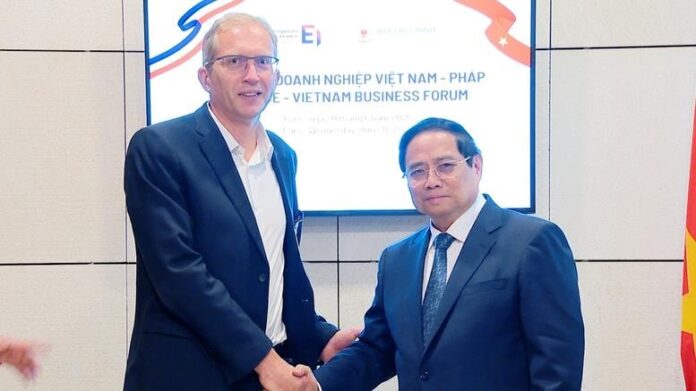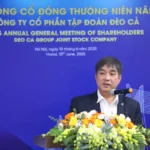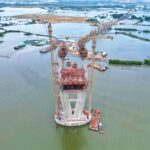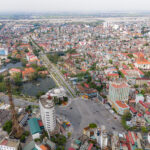Vietnam-France Bilateral Cooperation in Transportation: A Step Towards Modernization
Prime Minister Pham Minh Chinh meets with Mr. Henri Poupart-Laffarge, CEO of Alstom. 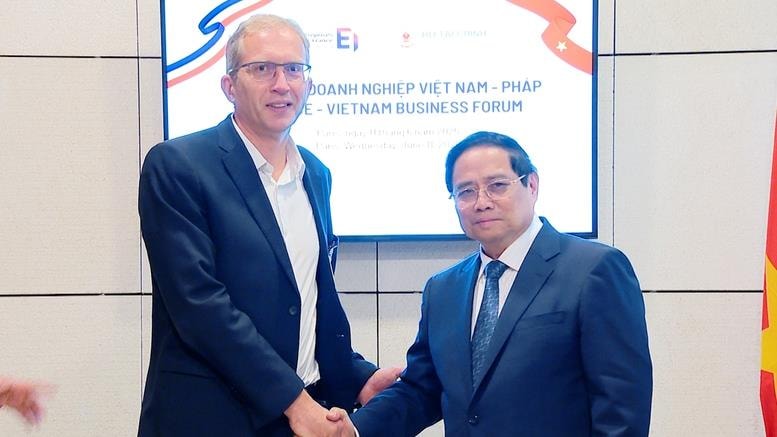
During his bilateral activities in the French Republic, Prime Minister Pham Minh Chinh met with leaders of Alstom, a global leader in transportation solutions with a €18.5 billion revenue in the 2024 financial year.
With over 30 years of presence in Vietnam, Alstom has actively contributed to the country’s infrastructure development, including the modernization of railway signaling and telecommunication systems, and the provision of core E&M equipment for Hanoi Metro Line 3 (Nhon-Hanoi Station), which commenced commercial operations in August 2024.
Mr. Henri Poupart-Laffarge, CEO of Alstom, expressed his desire to expedite the construction of Hanoi Metro Line 3 Phase 2, Ho Chi Minh City Metro Line 2, and other new lines by 2035, with a vision towards 2045. He also showed interest in participating in the high-speed railway project between Hanoi and Ho Chi Minh City.
Additionally, the CEO offered to share high-speed railway technology and collaborate with Vietnamese enterprises to develop the country’s railway industry.
Welcoming these proposals, the Prime Minister emphasized that cooperation with France is crucial for implementing new railway projects in Vietnam. He requested Alstom to work closely with the Ministry of Construction and relevant Vietnamese enterprises to turn these proposals into concrete actions.
Given Alstom’s experience in Hanoi’s urban railway project, the Prime Minister also suggested expediting future cooperation, emphasizing technology transfer, concessional loans, and human resource training in the railway sector.
Alstom stands ready to support Vietnam’s railway infrastructure development, especially high-speed rail projects.
On the same day, Prime Minister Pham Minh Chinh visited and worked with the French National Railway Company (SNCF), a state-owned enterprise and one of the world’s leading railway operators and managers with over 80 years of experience.
SNCF, born out of the merger of France’s five largest private railway companies in 1938, has evolved into a giant conglomerate. It not only operates France’s national railway network but also ventures into global logistics and public transport services.
SNCF’s main areas of expertise include passenger transport (including the TGV high-speed train), freight transport, infrastructure management and maintenance, railway engineering, and urban development around train stations.
One of SNCF’s standout strengths is its world-leading TGV system, which operates at speeds ranging from 300 to 320 km/h on dedicated tracks, powered by high-performance electric motors and high-voltage electricity, ensuring rapid acceleration and sustained high speeds.
In terms of infrastructure management, SNCF brings deep expertise in constructing, managing, maintaining, and modernizing complex railway networks, ensuring safety and efficiency. They also specialize in developing integrated urban areas around train stations, maximizing land value and creating new urban centers. Additionally, SNCF leverages digital technologies (BIM, AI, IoT) in planning, construction, and operation management.
France, and SNCF in particular, has expressed strong interest in supporting Vietnam’s railway infrastructure development, especially high-speed rail projects. On March 21, 2025, the Embassy of France in Vietnam and the Ministry of Construction held a workshop on high-speed rail, opening collaboration opportunities for agencies and enterprises from both countries.
Most recently, in May 2025, during the official visit of the French President to Vietnam, the Ministry of Construction, the French Development Agency (AFD), and SNCF International signed a Memorandum of Understanding (MoU) to enhance the capacity of the Ministry of Construction’s management officials in the railway sector. The French side also showed interest in the modernization project of the Hanoi-Haiphong railway line.
Prime Minister Pham Minh Chinh commended SNCF for its global capabilities, experience, and contributions in the field of railway and high-speed rail, as well as its active cooperation with Vietnamese partners.
The Prime Minister proposed that the French side and SNCF continue their cooperation and effectively implement the MoU signed with the Ministry of Construction. He also suggested sharing experiences, technology transfer, capital support, and human resource training to contribute to the development of Vietnam’s railway industry.
The Underground King: Where’s the Money Coming From for Vietnam’s High-Speed North-South Railway?
The Deo Ca Group is set to offer over 193 million shares to its shareholders, aiming to boost its charter capital to nearly VND 6,800 billion. This move is intended to bolster working capital and fund strategic investments, including the expansion of the North-South Expressway in the East, and ventures into urban rail and high-speed rail for the North-South corridor.
‘The Author’ Proposes $100 Billion High-Speed Rail: We’re Not Kidding
“Despite a staggering $100 billion investment pledge for high-speed rail, representatives of the consortium remain tight-lipped about their business model and profitability. In a revealing conversation, they shared insights that will undoubtedly raise eyebrows.”
The Longest Main Span Bridge in Southeast Asia: Connecting Ba Ria-Vung Tau and Dong Nai
As a key transportation project, the Phuoc An Bridge, connecting the provinces of Dong Nai and Ba Ria – Vung Tau, is entering its final stages with accelerated construction. This vital link between regions promises to revolutionize inter-provincial travel and trade, reducing travel time and fostering economic growth in the area. With its strategic location and efficient design, the Phuoc An Bridge is poised to become a prominent transportation hub, enhancing connectivity and bringing numerous benefits to the people of both provinces.

